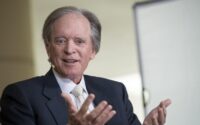Brazil Central Bank Keeps Interest Rate at 13.75%, Resisting Lula’s Pressure
(Bloomberg) — Brazil’s central bank held its interest rate steady for the sixth straight meeting, sticking with its tough inflation warnings and tweaking its language only slightly even as President Luiz Inacio Lula da Silva calls for looser monetary policy.
Most Read from Bloomberg
The bank’s board kept the Selic unchanged at 13.75% late on Wednesday as expected by almost all economists in a Bloomberg survey. In a statement, Copom, as the board is known, made a small concession by saying a new rate hike is less likely, softening language used since September.
At the same time, policymakers warned that the eventual approval of a new public spending framework wouldn’t automatically clear the way for slower inflation, and that consumer price estimates remain above their goals.
“Their commitment is to anchor inflation, and that still hasn’t happened,” said Laiz Carvalho, economist at BNP Paribas. “There is no room to cut rates. We keep our call for reductions only next year.”
Swap rates, which indicate investors sentiment toward monetary policy, fell around 4 basis points in Thursday morning trading for contracts due on January 2024 and up to 10 basis points by January 2025. The Brazilian real strengthened as much as 4.96 per dollar, before weakening again along with most Latin American currencies.
Annual inflation has eased significantly in Latin America’s largest economy, with consumer price rises falling back within the central bank’s tolerance range in early April. Still, last year’s tax cuts, which resulted in three months of deflation, are keeping those prints temporarily lower, and core measures stripping out the most volatile items like energy and food are running hot. Most analysts are betting cost-of-living increases will pick up going forward.
“The current scenario, characterized by a stage in which the disinflationary process tends to be slower in an environment of deanchored inflation expectations, requires further attention when conducting monetary policy,” policymakers wrote. “Copom emphasizes that there is no mechanical relationship between the convergence of inflation and the fiscal framework.”
Lula has been pushing for borrowing cost cuts since taking office in January, in the hopes of boosting activity and delivering on his promises of economic prosperity. On May 1, he again blasted the monetary authority, saying current interest rates fail to curve inflation but instead drive unemployment.
What Bloomberg Economics Says
“Brazil’s central bank included some relatively dovish signals in its post-meeting statement after holding the policy rate steady on Wednesday.”
—Adriana Dupita, Brazil and Argentina economist
—Click here to read full report
His criticism spilled over in two, hours-long hearings before lawmakers last week, when Campos Neto defended the decision to hold borrowing costs steady, saying a “sustainable” monetary easing cycle requires “credibility.”
Read More: Brazil Central Banker Holds Firm on Rate Amid Congress Grilling
Public Finances
Lula’s government also hoped the presentation of a plan to shore up public finances would justify rate cuts. The bill intended to replace the spending cap is expected to be debated in Congress and put to initial votes later this month.
After getting a warm welcome from investors, the plan suffered changes that stoked concerns about how feasible it will be to raise revenues as forecast.
In their statement, policymakers wrote the public spending proposal has partly reduced uncertainty surrounding fiscal policy.
Central bankers also maintained their year-end inflation projections at 5.8% for 2023 and 3.6% for 2024 in the reference scenario, which utilizes the path for rates laid out in their weekly economist survey. Policymakers target inflation at 3.25% this year and 3% next.
“The statement was not as harsh as previous ones, with its forecasts not showing any additional deterioration,” said Leonardo Costa, an economist at Asa Investments.
Labor Market
While the local economy is decelerating, the labor market has shown strength, policymakers wrote. Global inflation has remained resilient and measures of underlying consumer price increases in Brazil are above target, they wrote.
Indeed, Brazil’s decision came hours after the Federal Reserve raised interest rates by a quarter percentage point while hinting it may be the final move in the most aggressive tightening campaign since the ‘80s.
Brazil was one of the first emerging markets to raise borrowing costs in the aftermath of the pandemic, reversing course with aggressive tightening after taking rates to a record low of 2%.
Their statement signals rates will remain on hold until November, according to Mauricio Oreng, head of economic research at Banco Santander SA.
“Copom recognizes stronger employment conditions and an outlook where core inflation and inflation expectations are still unfavorable,” Oreng said. “We expect the Selic to be at 13% at year’s end.”
–With assistance from Giovanna Serafim.
(Updates with market reaction in fifth paragraph.)
Most Read from Bloomberg Businessweek
©2023 Bloomberg L.P.
[ad_2]
Source link


